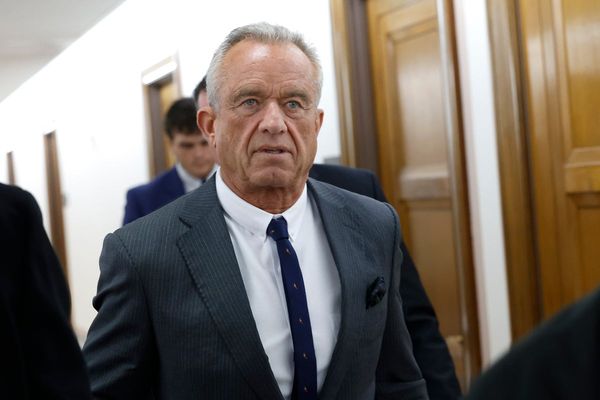
For the past few decades, whenever a geopolitical crisis or market tumult has led to higher oil prices, policy makers in the United States have generally followed the same playbook.
First, they try to get more oil on the market as soon as they can. That almost invariably has meant asking Saudi Arabia, which geology has blessed with the world’s most agile oil reserves and which the U.S. has blessed with several billion dollars in weapons, to pump and sell more petroleum.
Then, they invest in America’s “energy independence,” a hazy but ubiquitous slogan meaning that the U.S. should produce as much oil and natural gas as it consumes.
Finally, they recognize that the American economy cannot be truly stable so long as it rests on a single flammable commodity. So in the long term, they say, the U.S. must invest in energy efficiency and fuel conservation, and it must fund R&D so that solar, wind, nuclear, and other inexhaustible resources can come to power its economy.
Call it the energy-security two-step. Nearly every recent president has done something like it—even the not-particularly-environmentally-friendly ones. “In the short run, the American economy will continue to rely largely on oil,” George W. Bush said in 2008. “In the long run, the solution is to reduce demand for oil by promoting alternative energy technologies.” You can see the same thought appear in Barack Obama’s speeches, and in Richard Nixon’s.
Yet since Russia invaded Ukraine, every tenet of that approach has been either proved wrong or outright abandoned. After sanctions swept Russian oil off global markets, gas prices hit record highs. They were brought down not by any policy, but because China imposed new COVID lockdowns. At the same time, Congress has failed to invest in any of the clean alternatives that would reduce American oil consumption.
That’s especially stunning because, unlike during previous crises, renewables and electric vehicles are now mature technologies that could be deployed immediately to cut oil demand. We no longer have to dream: A future where the U.S. economy is far less vulnerable to wild oil price swings—the goal of U.S. energy policy for the past 50 years—is now within reach. But instead of seizing it, lawmakers are sitting around. For the first time in many years, America has no credible plan for how to maintain its energy security in a geopolitical crisis.
Just how bad is America’s energy-security crisis? Over the course of the 2010s, the new technology of hydrofracturing, or fracking, allowed U.S. companies to drill more and more every year. In 2019, the country actually produced more oil than it consumed for the first time in 62 years. America seemed to have finally achieved its goal of becoming “energy independent.”
Today, America is the world’s largest oil and gas producer, but instead of winning us energy independence, this distinction has made the country dangerously dependent on market whim. No matter how much oil the U.S. drills, crude prices are still set on the international market—so when Russia invaded Ukraine, oil prices in America soared. This point alone invalidated the central principle of energy independence, that suburban F-150 drivers should not have to pay more at the pump because someone else started a war.
[Read: America is the world’s largest oil producer. So why is losing Russia’s oil such a big deal?]
What about asking Saudi Arabia to drill more? Well, the White House actually did ask last summer, long before the war began. The Saudis declined. That relationship has frayed partially because of our new status as a major oil producer. The U.S. is no longer just Saudi Arabia’s largest customer; it is also the kingdom’s largest competitor. Today, Saudi leaders won’t even take Joe Biden’s calls.
If Saudi Arabia won’t pump more, why doesn’t the U.S.? After all, doesn’t America have a large fracking industry, and a continent’s worth of oil just waiting to be tapped? This assumption, too, has failed. Unlike the government of nearly every other major oil-producing country, including Saudi Arabia and the other OPEC states, the U.S. government cannot open and close its own oil taps. It cannot compel oil companies to drill more. So when the war sent oil prices soaring, the government was powerless to bring them down.
Yet America’s private companies couldn’t help either. After a series of busts and near-death experiences, American fracking firms now manage their cash flow so neurotically that some executives have sworn not to drill more even if oil reaches $150 a barrel, an all-time high. In short, America is sitting on all the oil it needs right now—and nobody has the power to reach it.
[Read: The global oil market is based on a fiction]
That’s the wreckage of our fossil-fuel policy. Our clean-energy policy is going even worse.
A few months ago, the United States seemed to be on the verge of deploying solar and wind farms, geothermal plants, and even advanced nuclear plants across the country. As part of Biden’s overstuffed Build Back Better package, the House had passed ambitious legislation to deploy zero-carbon energy sources at never-before-seen scales and with remarkable efficiency.
Today, those climate-policy plans seem to have imploded. Senator Joe Manchin, the Democrat from West Virginia who killed the broader Build Back Better package in December, has said that he supports many of the clean-energy provisions and could himself revive them. But there is no sign that this is actually happening. In the meantime, hundreds of billions of dollars in private investment in clean energy is waiting on the sidelines.
This failure isn’t just bad news for energy prices; it means that America’s broader position in the clean-energy transition has deteriorated since the war in Ukraine ramped up. The United States once flattered itself with the notion that it could compete with China to become a clean-energy-manufacturing powerhouse. This would have always been a hard goal, given China’s considerable head start and its massive scale: In 2021, China’s EV sales alone were more than one-fifth of the size of America’s entire car market. But it will be impossible if American companies cannot benefit from the industrial support and consumer-side subsidies meant to help them catch up with global competitors.
American firms may not even be able to get the raw materials that they need to compete anymore. Although pilloried as little more than a “big gas station,” Russia is a major supplier of copper, platinum, and other minerals needed for the energy transition. (One Russian company, for instance, produced 17 percent of the world’s Class I nickel, the type used in EV batteries.) Whatever their merits, the West’s sanctions have sent the price of these metals soaring worldwide. Retaliatory sanctions could eventually make it impossible for American and European firms to buy these raw goods.
In the short term, that will increase the cost of clean technologies. In the long term, the West’s economic blockade may have just enabled Chinese firms to acquire these raw materials from Russia on the cheap, further entrenching the lower costs of Chinese-made climate tech and improving their economies of scale. And should the U.S. ever have to sanction China the same way that it has sanctioned Russia, it will find itself in the dark, severed from the world’s foundry of new energy technology.
In just a few weeks, then, every tenet of America’s energy policy has deteriorated. But now, no policy maker or major interest in Washington seems well positioned to solve this problem. Everyone is stuck: The oil companies can’t get new fossil-fuel supply on the market in less than a year without ceding power to the White House. The White House can’t work with the oil companies without fracturing its climate-concerned coalition—unless it could, at the same time, get major climate policy passed in Congress to reduce our long-term dependence on oil. But Congress won’t budge. Its failure to pass any comprehensive energy policy is the core of the problem.
There’s only one man in the federal government who could break this impasse: Senator Joe Manchin of West Virginia. Manchin doesn’t just provide the pivotal 50th Democratic vote in the Senate; he owns millions of dollars worth of stock in a fossil-fuel company, is the biggest recipient of fossil-fuel donations in Congress, and is one of the few Democrats who can claim to understand how the fossil-fuel industry thinks. That could place him in a position to at least restart negotiations. But who knows what he believes anymore? In recent months, he has said he wants an energy bill and then declined to restart talks over one. Although he once seemed open to the idea of a clean-energy mandate, he yanked that policy from the bill too. (Senate Majority Leader Chuck Schumer, who has too often opted to pressure Manchin publicly rather than treat him as a crucial partner whose support he must secure, bears some blame here as well.)
The two men are not alone. Republicans, who refuse to support even the mild climate policies favored by European and Canadian conservatives, also shoulder the blame for the wreckage of U.S. policy. It was President Donald Trump who scrapped “energy independence” for “energy dominance,” framing fossil fuels not as a necessary evil but as a positive good. But Democrats are in the governing majority today, and Manchin leads the Senate’s energy committee, so it is their job and his, at least in theory, to govern.
The most likely outcome is that nothing changes. The United States will take its oil and let it fetch the highest price on the world market. The dissipation of America’s natural resources will continue, and we’ll muddle through, safe in the belief that nothing too bad could really happen. We might be all right for a while, until we aren’t.







